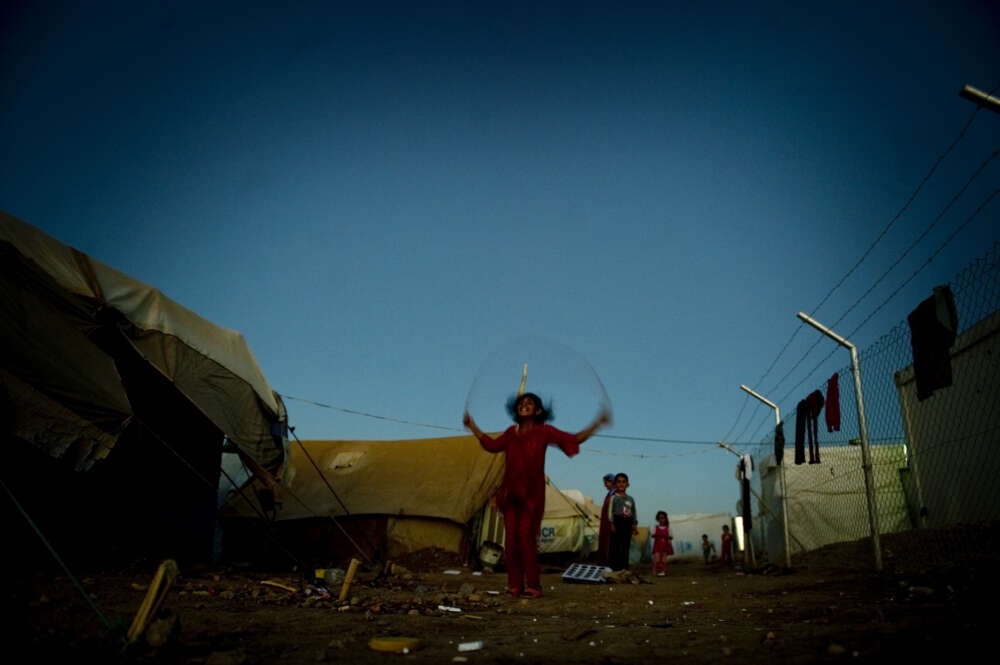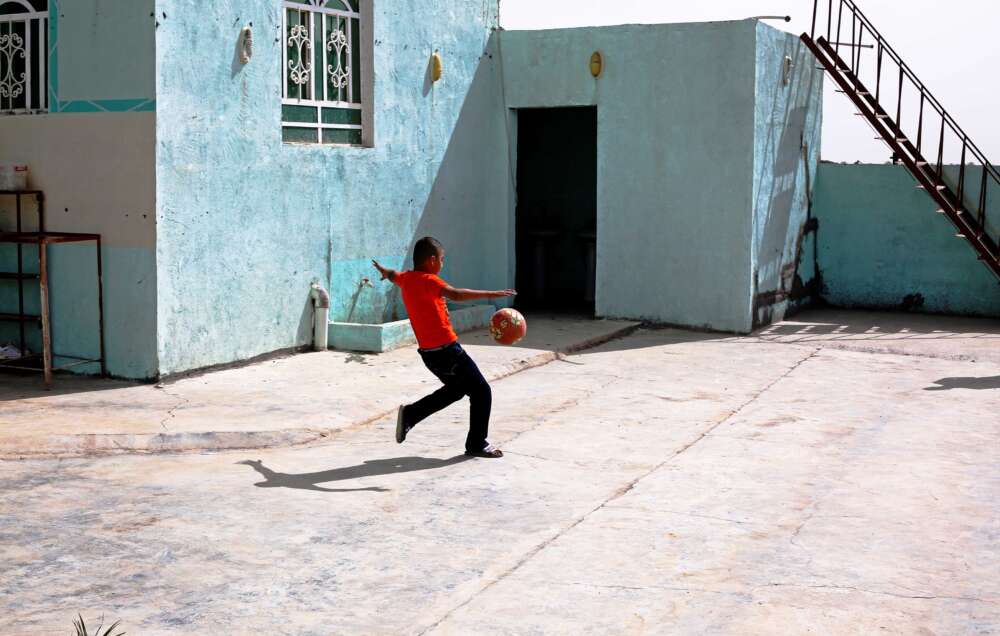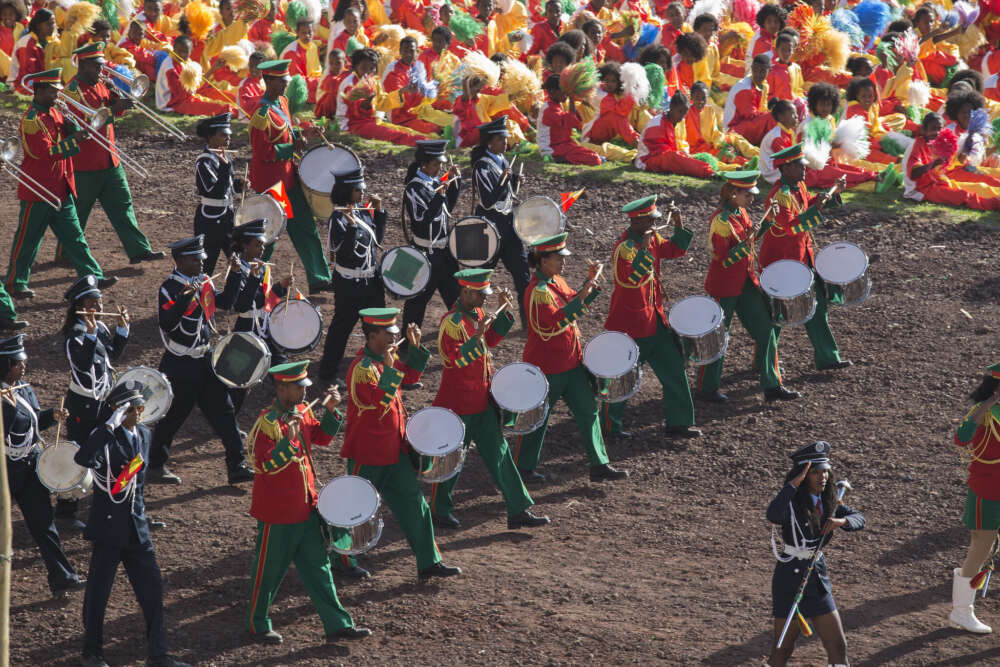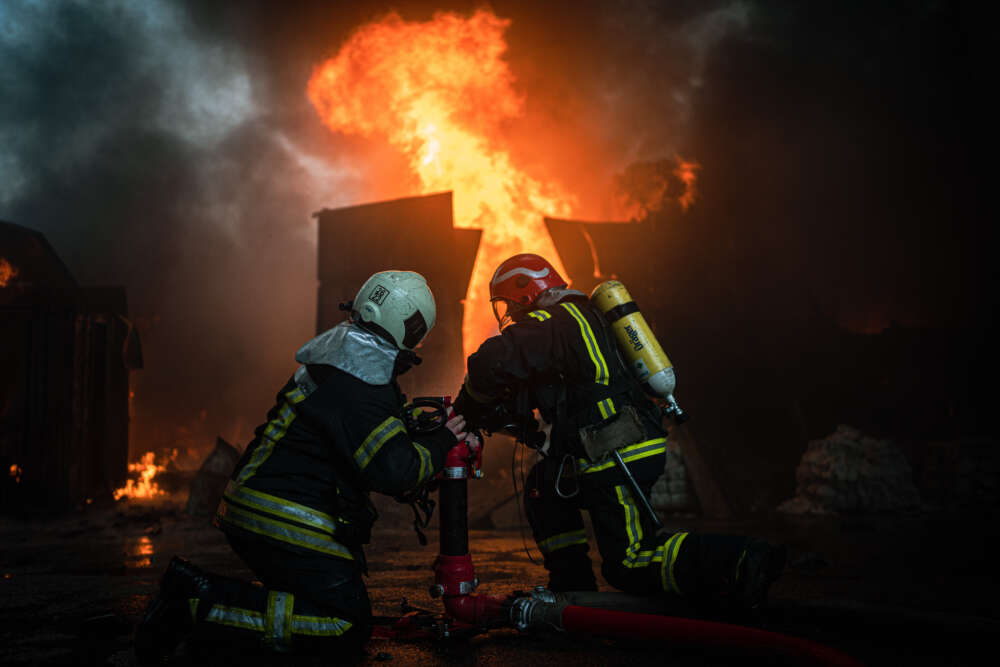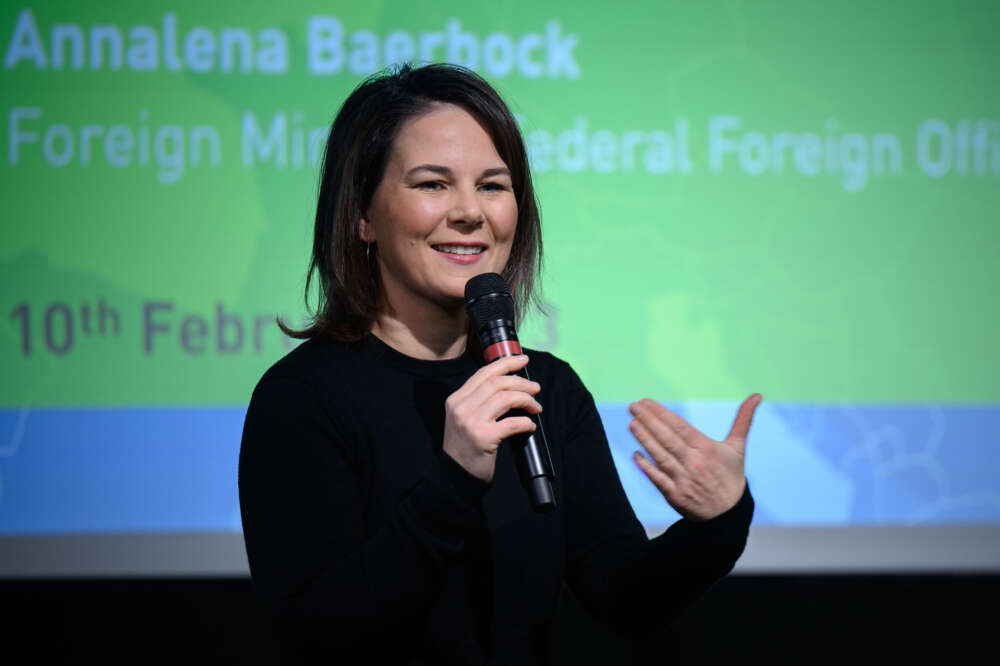Stick or Twist: Is Peace Enforcement Part of the UN’s Future?
The Future of United Nations Peace Operations
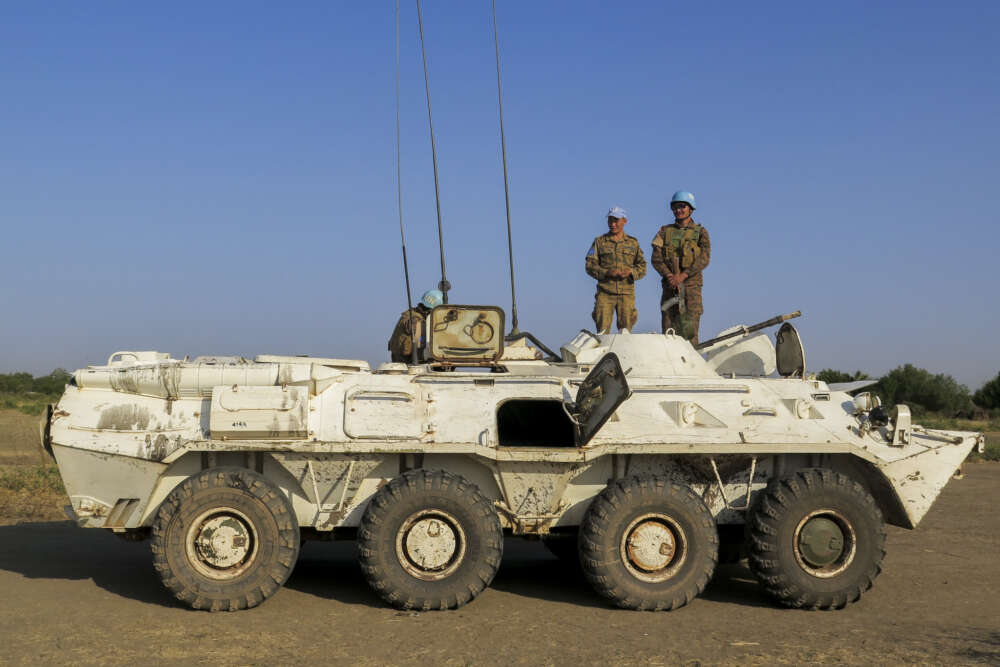
The United Nations (UN) Peacekeeping Ministerial in May 2025 will serve as a high-level political forum for Member States to discuss the future of peacekeeping. This comes at a difficult time for the UN and UN peace operations. Multiple peacekeeping missions have been asked to leave by host countries in recent years, the UN Security Council (UNSC) has failed to mandate any new missions, and the UN Secretary-General is not championing blue helmets in the same manner as his predecessors. A potentially rapidly declining UN budget and dwindling faith – and even outright disdain – towards multilateralism among major donors and troop contributors to UN peacekeeping is adding to growing pressure.
At some point really soon, the UN probably has choices to make about its future peace and security offering. It can accept that it will need to do less with inevitably fewer resources, or it can attempt to rebrand itself to cozy up to certain political forces in a bid to stay relevant. Against this background, the future evolution of UN-led and UN-authorized peace operations is unclear. For some, a shift towards peace enforcement is a potential answer to some of these pressures. For others, this would be a recipe for disaster for the UN. This briefing outlines the arguments for and against, as a contribution to the Global Alliance for Peace Operations issue papers. It is the position of the authors that UNSC Members and the broader C34 members should continue to ensure that the UN offering on peace operations should maintain a clear line between peacekeeping and peace enforcement approaches.
What is peace enforcement and where does it fit in UN peace operations?
‘Peace enforcement’ is a form of intervention – that can be mandated by Chapter VII – which involves the use of force against combatants and usually includes heavy counter-terrorism elements. The Capstone Doctrine defines it as “the application, with the authorization of the Security Council, of a range of coercive measures, including the use of military force. Such actions are authorized to restore international peace and security in situations where the Security Council has determined the existence of a threat to the peace, breach of the peace or act of aggression. The Security Council may utilize, where appropriate, regional organizations and agencies for enforcement action under its authority”.
It has been used by several states and regional organizations, like the African Union (AU), but is distinctly different to post-cold war UN peacekeeping missions, which: (1) are intended to preserve an existing peace or support nascent peace processes; (2) depend on host state consent for a deployment; and (3) limit military action, including the use of force, primarily for protection purposes (for example, self-defense of the mission, as well as to protect civilians and deter actors that undermine peace processes). Although there have been UN-mandated peace operations with peace enforcement elements, the UN has not deployed a mission where peace enforcement is the sole task under blue helmets.
The UN has previously, in limited circumstances, been mandated to perform peace enforcement-type tasks – for example, through the Force Intervention Brigade component (discussed below) of the UN Organization Stabilization Mission in the Democratic Republic of the Congo (MONUSCO). However, the doctrine has never been embraced as a core operating concept, given the unwillingness of troop-contributing countries to put their forces in harm’s way and a lack of political agreement among UNSC members. Yet, in recent years, the concept of peace enforcement has been elevated by UN leadership and others in discussions around UN peace operations. In A New Agenda for Peace policy brief from July 2023, the UN Secretary-General stated that “The increasing fragmentation of many conflicts, and the proliferation of non-State armed groups that operate across borders and use violence against civilians, has increased the need for multinational peace enforcement and counter-terrorism and counter-insurgency operations.” This included a recommendation for the UNSC to authorize peace enforcement action by multinational forces or (sub-)regional organizations where appropriate, and a recommendation for the UN to offer support to other peace enforcement operations when implementing countries or regional organizations lack the required capabilities.
Further, when the UNSC passed Resolution 2719 in December 2023, which provides the framework to support AU-led peace support operations – including potential peace enforcement mandates –through UN-assessed contributions, many thought this could usher in a new era of peace operations. While regional ownership and leadership in peace operations are undoubtedly crucial, the operationalization of the resolution entails several risks. In the Pact for the Future from September 2024, Member States underlined the importance of this UN-AU collaboration and requested the Secretary-General to review all forms of UN peace operations and provide recommendations on how they can be adapted to meet evolving needs. With the unravelling of many assumptions related to global peace and security policy in 2025, are the concepts of peacekeeping and peace enforcement heading for a collision course at the UN?
The case for peace enforcement
The argument in favour of the UN to embrace peace enforcement appears to rest on three issues: 1) the perceived irrelevance of traditional peacekeeping models, combined with 2) the desire for the UN to re-establish its role as a critical global actor for peace and security challenges, and 3) the predicted need to adapt to a changing funding environment.
Relevance: Violent conflict and global security policies have changed significantly since the heyday of contemporary/post-Cold War UN peacekeeping. No large-scale multidimensional UN peacekeeping mission has been authorized since 2014. Recent missions have been dogged by claims of ineffectiveness. This has raised serious questions about the relevance of the mandates of many current UN peacekeeping missions. Faced with these difficulties, UN leadership might seek to redefine its peace operations doctrine to remain relevant to perceived future peace and security challenges. Proponents might draw upon examples where peace enforcement mandates have been important tools used by multilateral organizations to protect civilians and de-escalate conflict. The Force Intervention Brigade component of MONUSCO is most often cited as an example of short-term success – given the mission’s initial role in neutralizing the M23 armed group in 2013. Similarly, although not a multilateral example, the French mission Operation Serval did have a modicum of success in preventing advances and protecting civilian populations when violent non-state armed groups quickly advanced through northern Mali. Saferworld research also points to some examples where the limited use of force was an important component to support a political strategy and find a way out of violent conflict in Iraq, Colombia and Northern Ireland.
Reputation: In recent years, frustration with the limits and impact of peace operations has led to peacekeeping missions being drawn down, asked to leave, or unceremoniously booted out. Hostility has been directed at UN peacekeepers by host governments and populations alike in Haiti, South Sudan, the Democratic Republic of the Congo and elsewhere. Faced with this perceived crisis of reputation, UN leadership might seek to cater to some demands for UN peacekeeping to morph into a new posture. This might lead the UN to look to outsource a greater proportion of current UN peace operations to regional organizations such as the AU – even if significant questions remain about the ability of these same regional institutions to apply policy guidance related to peace operations and peacekeeping, for instance, regarding transparency, human rights and protection of civilian approaches.
Resources: In recent years, UN peace operations have been expected to do more with fewer resources – the peacekeeping budget has been reduced from around USD$8.3 billion in 2015/16 to $5.59 billion in 2024/2025. With a series of cuts to foreign assistance and aid budgets by a number of the largest donors, the UN is in the midst of a full-blown funding crisis. Bellicose rhetoric from the second Trump Administration has many concerned that the assessed contributions from the US – in their entirety – might not be forthcoming. For peace operations, the loss of around $1.2 billion per year (in addition to outstanding US arrears) will present significant liquidity challenges. While the most dramatic turn has certainly come from the US, these cuts to support peace and security programming are by no means isolated. The UK, Germany, France, the Netherlands and the EU are all cutting or repurposing portions of their foreign aid spending. Outsourcing peace operations, including peace enforcement missions, to other regional actors such as the AU could be seen as a way of maintaining some budget contributions in austerity times.
The case against peace enforcement
The resolute case against the UN’s embrace of peace enforcement relies on 1) the mass of evidence pointing to limited success at best, and outright failure at worst, of previous peace enforcement missions; 2) the poor long-term prospects for peace such missions produce; and 3) the clear incompatibility with current doctrine and potential damage to the UN’s reputation as an impartial actor.
Poor track record on human rights and civilian harm: The proactive use of force inherent within peace enforcement mandates creates significant risks that missions will negatively impact human rights, increase sexual and gender-based violence, and harm civilians during operations. This is not to suggest that the UNSC and UN should do nothing in contexts where civilians need protection from armed groups, but to highlight the risks if mandates shift towards more use of force postures. The AU’s experience in Somalia with peace enforcement mandates, through the AU Mission in Somalia (AMISOM) and the AU Transition Mission in Somalia (ATMIS), illustrates this clearly. While AMISOM/ATMIS have provided limited security for some regions of the country, multiple organizations have documented how “the AU’s near-two-decade-long intervention in Somalia has been mired in controversy. Some of its forces have been accused of abuse – including execution-style killings, rape, and indiscriminate airstrikes.” Clear evidence25has also shown that interventions by peace enforcement components of stabilisation interventions regularly cause increased violence against civilians and have provided no shortcuts to security.
Ineffectiveness and future quagmires: Many of the contexts where peace enforcement style mandates have been considered are marked by the existence of violent groups using terror tactics. The UN offering is not designed or equipped for counter-terrorism operations, which are usually military-led efforts requiring intelligence, targeted operations and offensive capabilities. There is significant evidence that peace enforcement as an approach has been particularly ineffective in the context of counter-terrorism and counter-insurgency operations (often targeting ‘proscribed groups’ in Afghanistan, the Sahel, Somalia and other regions). Peace enforcement tasks in these contexts have generated blowback and have ended up reinforcing, rather than reducing, conflict drivers – particularly human rights abuses, corruption and exclusion. Getting trapped in the “self-reinforcing system’ of ‘regime protection operations’” – which have, in many contexts, led to further protracted conflict and continued resilience of proscribed groups – would be a disaster for the UN. These dangers are especially pertinent in many of the areas where peace operations are deployed, like Mali or the Democratic Republic of the Congo, where there has been evidence of regimes violently repressing civilians. In such cases, there is a serious risk that external additional military support from the UN or other regional forces can be used to protect regimes that pose a risk to civilians that is comparable to the non-state violent groups they are targeting. As argued previously, these sorts of mandates will
change the UN’s aspirations in conflict zones away from the promotion of peace and human security “to an agenda that facilitates the management of violence in support of the national security of embattled member states.”
Compromising impartiality and credibility: UN peace operations policy documents have never wavered from the core principle of impartiality. Many concerns have been raised with the unavoidable impact to impartiality if the UNSC uses a Chapter VII mandate for peace operations to engage in peace enforcement tasks against violent groups using terror tactics. While UN peace operations have operated in complex conflict environments, they have so far avoided directly engaging in counter-terrorism operations. If UN peace operations become directly involved in counter-terrorism, they risk undermining other peacekeeping and peacebuilding models in which the UN still has a modicum of success. Further, supporting military counter-terrorism operations could damage the UN’s reputation, making it harder to act as an impartial peace and security actor. This was most clearly seen in the case of the UN Multidimensional Integrated Stabilization Mission in Mali (MINUSMA), which had close links to the heavily militarised French Operation Barkhane counter-terrorism mission. MINUSMA faced an array of challenges out of its control, including Russian-led disinformation campaigns, blowback from disastrous regional counter terrorism policies and constantly changing authorities through multiple military coups. Nonetheless, there is ample evidence that MINUSMA’s closeness with counter-terrorism missions had a negative impact on its reputation, effectiveness and the ability of the UN system to operate within Mali and the sub-region. Similar sentiments have been noted in Somalia with AMISOM/ATMIS.
Embracing peace enforcement: a quick fix?
Questions about the evolution of peace operations need to be informed by past evidence, future needs, and present realities. Too often, the answer to such policy debates is made to satiate short-term challenges (such as dramatic budget decreases), and both the past evidence and long-term implications are ignored. However, when we take into consideration what works, an embrace of peace enforcement is not in the interests of the UN, its donors, or civilians impacted by violent conflict. Evidence shows that peace enforcement missions have been predominantly unsuccessful, do not fit with current UN operational structures, and are not compatible with UN peacekeeping doctrine. If the UN shifts towards peace enforcement – through blue helmets or by outsourcing to other regional organizations – it is liable to contribute to the growing list of failed peace enforcement interventions. It could continue to erode the norms of peacekeeping, undermine the models in which peace operations are successful, and further diminish faith in the UN institution.
The budget difficulties of today might make some previously inconceivable options seem compelling, but short-term sacrifices to maintain relevance are likely to have serious long-term consequences for UN principles. Therefore, shifting further towards peace enforcement seems like a bad bet to make, and will pave the UN’s way into – not out of – crisis. Budgets come and go, but norms do not. Nor is it hard to envisage effective UN peacekeeping operations without peace enforcement. The Future of Peacekeeping, New Models, and Related Capabilities, commissioned by the UN Department of Peace Operations, lays out 30 ‘models’ or roles for peacekeeping, including deploying peacekeepers to stem a looming conflict, supporting the organization of free and fair elections, and protecting shipments and convoys of humanitarian aid. The authors described the models as a ‘menu of options’ for UN member countries to choose from as potential solutions to future problems. Importantly, none of these options are securitized, regime protection-style peace enforcement.
This article was originally published in the Global Alliance for Peace Operations portal on 7 May, 2025.


